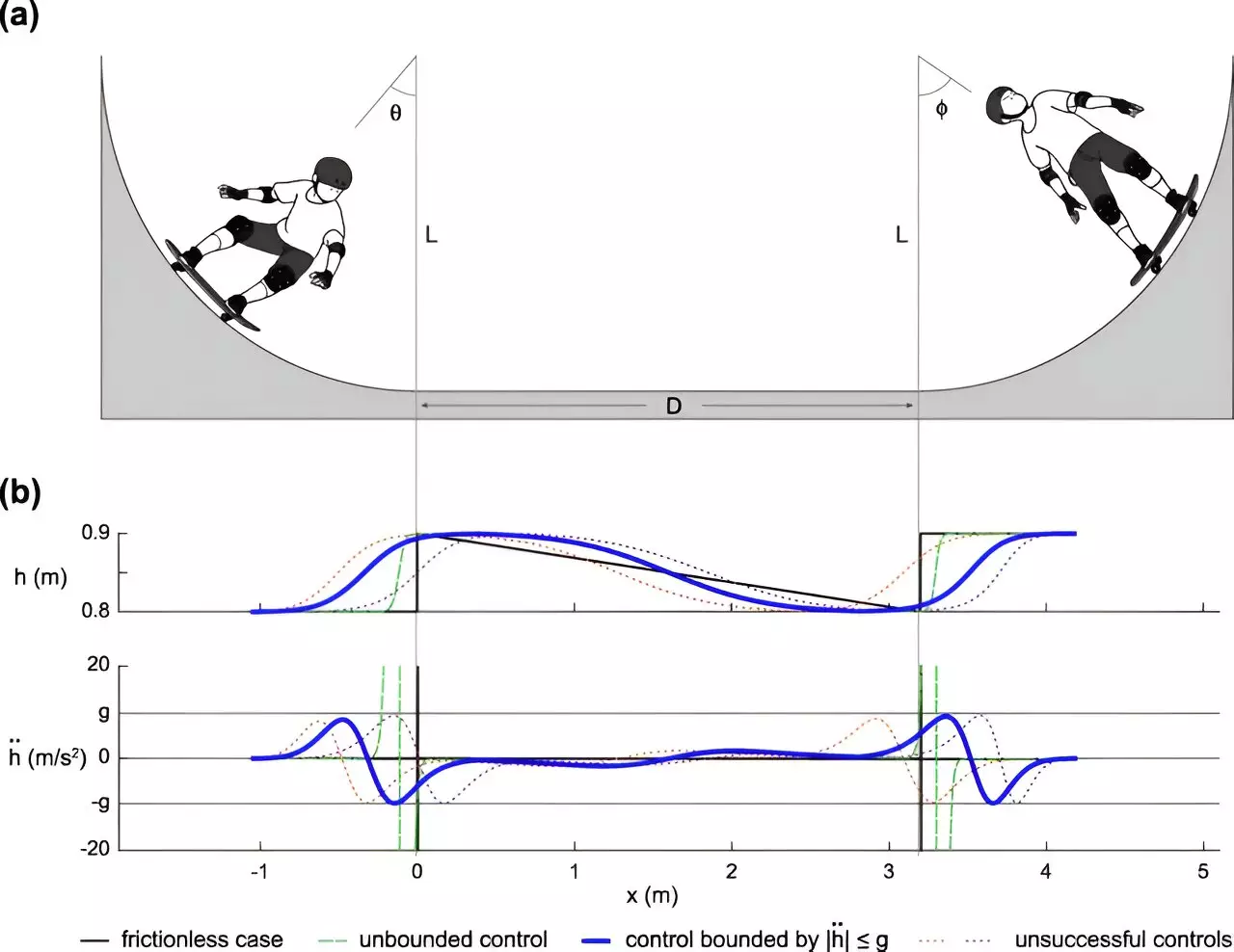In an innovative collaboration between engineers and mathematicians from ETH Zürich, and esteemed institutions in Japan, groundbreaking advancements have been made in understanding the dynamics of skateboarding, specifically the mechanics of skaters navigating half-pipes. Published in the prestigious journal Physical Review Research, this research explores the intricate relationship between human movement and physics in an environment where speed and balance play pivotal roles. By drawing parallels to simpler physical systems, such as a swinging pendulum, the researchers were able to construct a model that sheds light on the complexities of balance and propulsion in skateboarding.
A half-pipe—a quintessential element in skateboarding—resembles a semi-cylindrical structure, often crafted from durable materials like wood or concrete. This design creates a valley, with a smooth surface that skaters use to generate momentum. As they descend one side of the half-pipe, they roll across the bottom and ascend the opposite slope, where the true artistry lies in the control and manipulation of their movements. The initial descent is straightforward, but the challenge amplifies as the skater must continuously pump their body to sustain motion, akin to how one pushes against the ground while on a swing.
What fundamentally distinguishes the pumping technique in skateboarding is its dynamic nature. The skater crouches to lower their center of gravity in the valley, then uses that position to push upward, leveraging the ramp’s curvature to gain additional height and speed. This cyclical movement is critical; without it, inertia would eventually lead the skate to halt. The skill lies not only in the execution of these pumps but also in timing and physics; finding the optimal angle and weight distribution is essential for achieving speed and aerial maneuvers.
The research team’s approach was predicated on existing physics models of pendulums and swings, subsequently tailored to fit the intricacies of skateboarding. By analyzing video footage of skateboarders in action, they augmented their model with details that reflect the unique characteristics of human movement on a half-pipe. These elements included the modulation of mass and the angle at which the skateboarder positions their board concerning the half-pipe surface, all of which correlate to speed generation and momentum retention.
The meticulous nature of the research allowed the scientists to discover potential optimal strategies for pumping that could theoretically maximize acceleration on the half-pipe. However, the model also revealed practical limitations; the extreme effectiveness observed in the simulated environment might not translate directly to reality, where the forces at play can lead to skaters losing their balance or launching off the ramp entirely. This aspect highlights the challenges in applying theoretical models to practical execution seamlessly.
Although the immediate goal of the model was to understand and optimize pump techniques for skaters, the broader implications extend beyond recreational sports. The findings could potentially inform the design of robots and automated systems intended to navigate uneven terrains. By learning from the balance and movement strategies derived from skateboarding, machines may become better equipped to handle complex landscapes, from hills to rocky environments.
This multidisciplinary effort fosters a deeper understanding of how physics interplays with human movement in skateboarding. By bridging theoretical models with practical skills exhibited by skaters, this research not only enhances athletic performance but also presents valuable insights for technology development in robotic mobility. The implications of such studies are profound, intertwining the realms of sports science, engineering, and robotics in ways that may revolutionize both training methods for athletes and designs for machines.


Leave a Reply